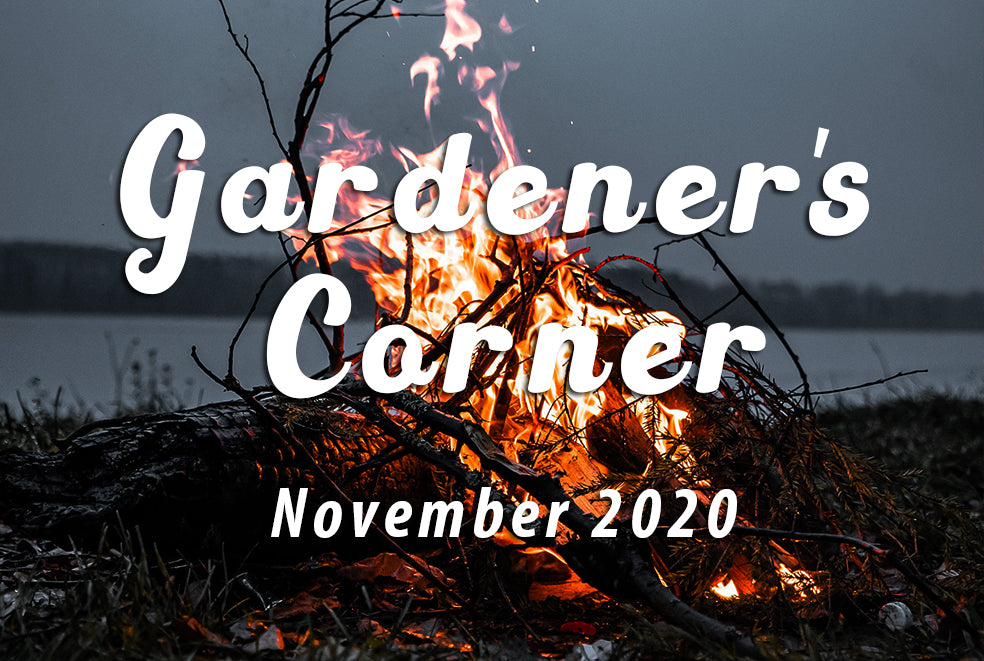Now the clocks have gone back, the nights are drawing in and the leaves are falling everyday. The bonfires are burning away all the dead wood. It is time to start tidying up in the garden.
Leaves
Clearing up leaves, it seems like a never-ending job at this time of year but if you love your lawn it’s well worth it! This is because leaving dead leaves on the lawn can suffocate the grass. To make it easier it is worth investing in a leaf rake, leaf grabbers, gloves, and a good pop up waste bin for use around the garden.
Leaf Compost
Do not waste the dead fallen leaves as they make some of the best composts you will ever use.
A wire netting enclosure or compost bin is ideal for storing the leaves. The will take approximately 2 years to rot down to make the perfect mulch and compost for your garden. Damp leaves rot down faster than dry ones.

Wildlife
Do not forget the wildlife in your garden this time of year. Clean or replace bird feeders and bird baths. Washing bird feeders helps to prevent diseases like avian flu and Trichomonosis (Canker).
Feeding birds at this time of the year is very important as the temperature begins to fall and other food becomes scarce. Seeds, fat balls and mealworms are all excellent high energy foods to help the birds through the chilly winter months.
Roses
November is the traditional time to plant roses. The soil is still warm and it gives the rose plant time to establish its roots nicely. As the year develops the rose will need to direct its effort into producing flowers all summer long, so well-established roots will allow the rose to fuel itself during this time.

How to Plant a Rose
Roses are hungry plants and are best planted in farmyard manure mixed with the top 20-30 cm of soil.
Add in mycorrhizal fungi to the soil mix to the same depth as the manure.
Tip: Do not add chemical fertilizer if you are using mycorrhiza as phosphorus restricts the effectiveness of the fungi.
- Dig a hole twice the width of the plant and a spades depth.
- When placing the plant in the hole, gently tease the roots out. This will help the roots extend and helps to prevent them suffering drought in the summer months.
- Do not plant the rose too deep. The graft on the plant should be level with the ground.
- Back fill the hole with the soil mix (manure, soil & mycorrhizal fungi) and firm it up around the roots. Roses love to have secure roots and this will help them to thrive and establish.
As we are in November, ensure that you trim back existing roses to prevent wind rock during winter storms.
Greenhouse
As we head into winter, it is time to give your greenhouse some attention.
The greenhouse should be cleaned yearly, therefore it is best to choose a mild sunny day to do this.
We recommend using a product such as diluted RHS Outdoor cleaning Fluid as it is ideal for use both inside and out of the greenhouse.
To be on the safe side, it is best to remove your plants from the greenhouse where possible when cleaning.
Remember to be careful when cleaning glass - use long handles tools and wear gloves.
Gutters may need a clean out due to the possible build-up of leaf debris.

Insulation
Once the greenhouse is cleaned outside and in, it is time to consider insulating for the winter. Put up some bubble wrap to act as insulation for when the weather does start to get cold.
Insulation will help to cut down on the cost of heating the greenhouse as well as saving your plants from the cold.
Bubble wrap is a great way to do this as it lets light reach your plants.
Remember, the larger the ‘bubble’ the more light that it lets in.
Double glaze your greenhouse by using bubble wraps clips to trap a layer of air between the glass and the bubble wrap. Sheets of bubble wrap can be joined by using clear weatherproof tape which is ideal for use around doors.
To create smaller areas in your greenhouse use the bubble wrap as curtains. Fix it to the roof and side with bubble wrap clips and weatherproof tape and weigh it down at the bottom so it does not move. Smaller areas in the greenhouse usually keep warmer without the need for extra heating.
Plants can be covered overnight with bubble wrap or horticultural fleece to give extra protection.
Use a maximum - minimum thermometer to check daily levels in the greenhouse and add extra heating if necessary.
If you only have a small number of plants that need protecting you could use a heated propagator or bring plants in and place them on windowsills instead of insulating and heating a whole green house.
Install solar lighting in your greenhouse you will be able to check your plants in the darker evenings.

Outdoor Potted Plants
Outdoor pots can be protected by raising them off the ground on pot feet and wrapping them in hessian or bubble wrap. Raising them during winter both guards against waterlogging and frost. You want to prevent the compost inside the pot from freezing so raising them off the cold ground will help with this.

